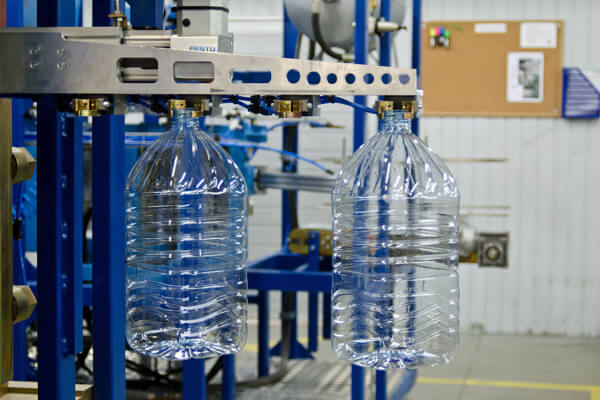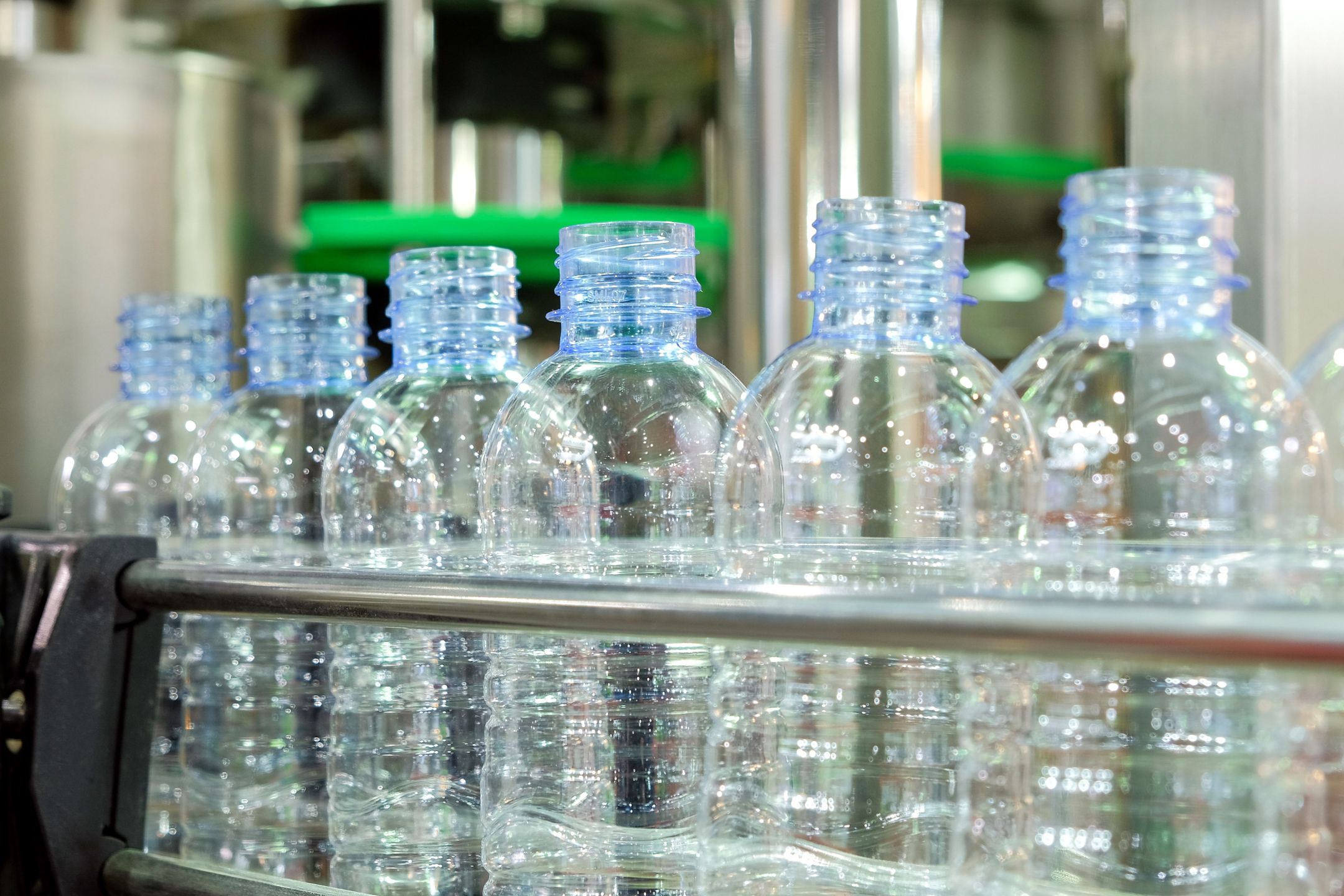
What is the PET Plastic Manufacturing Process?
The production of PET (Polyethylene Terephthalate) plastic is a meticulously orchestrated process that plays a pivotal role in the global packaging industry. From the ubiquitous plastic bottles to the fibers used in clothing, PET plastic is a versatile material that finds its way into our daily lives. Let's talk about the intricate process of manufacturing PET plastic, shedding light on the stages involved, the environmental considerations, and the role of manufacturers like Wkai in meeting the demand for this remarkable material.
Raw Material of PET Production Process
The journey of PET plastic begins with the sourcing and preparation of raw materials. The primary raw material for PET production is petroleum-derived ethylene glycol and purified terephthalic acid (PTA), which can also be produced from paraxylene. These materials are sourced and refined to meet specific quality standards. Ethylene glycol, for example, undergoes a distillation process to remove impurities.
Once the raw materials are prepared, they are carefully mixed to create a precise chemical composition required for PET production. This mixture is then fed into a reactor, where a catalytic reaction takes place, resulting in the formation of PET resin pellets. These pellets are subsequently cooled, solidified, and cut into small pieces, ready for the next phase of the process.
Key Part of PET Manufacturing Process - Polymerization
Polymerization is the heart of PET production, where the small PET resin pellets undergo a transformation into long-chain polymers. This step is crucial for achieving the desired properties of the final PET plastic. The polymerization process occurs in a reactor at high temperatures and under carefully controlled conditions.
During polymerization, the molten PET material is subjected to extreme heat and pressure, causing the individual molecules to link together, forming long chains. This process, known as condensation polymerization, involves the elimination of water molecules as a byproduct. The reaction is closely monitored to ensure the desired molecular weight and properties are achieved.
After polymerization, the molten PET is rapidly cooled, solidified, and cut into small pellets. These PET resin pellets are now ready for further processing, including the creation of various PET products, from bottles to textiles.
Products of PET Plastic Production
With the PET resin pellets in hand, manufacturers like Wkai can proceed with the production of PET plastic products. The specific manufacturing process may vary depending on the desired end product. Here, we'll focus on the production of PET bottles, a common application of PET plastic.
Preform of PET Plastic Production
The first step in PET bottle manufacturing is the production of preforms. Preforms are small, tube-like structures that serve as the starting point for the bottle-making process. These preforms are created by heating PET resin pellets and injecting them into preform molds. This injection molding process ensures that the preforms have the desired shape and thickness. Once the preforms are formed, they are cooled and stored for future use in the bottle-blowing process.
Bottle Blowing
The bottle-blowing process is where the preforms are transformed into the familiar PET bottles. This process involves reheating the preforms to a precise temperature, making them pliable. Then, the preforms are placed into bottle molds, where compressed air is used to blow them into the final bottle shape.
The bottle-blowing process requires precision to ensure uniform wall thickness and the desired bottle design. It is a highly automated process that can produce thousands of bottles per hour.

Reheating: The preforms undergo a reheating process to bring them to the ideal temperature for shaping. This heating makes the preforms pliable, allowing them to be molded into their final bottle form.
Bottle Molding: The reheated preforms are then placed into bottle molds. These molds are meticulously designed to match the intended shape, size, and design of the final bottles. Compressed air is then injected into the preforms, using the pressure to blow them into the desired bottle shape.
Uniformity and Precision: The bottle-blowing process is highly automated to ensure uniform wall thickness and precise bottle design. The level of detail in this stage guarantees that each PET bottle is consistent in quality and meets the required specifications.
High Production Capacity: Bottle-blowing machines are capable of producing thousands of bottles per hour, making it an efficient and high-capacity operation. This level of productivity is essential for meeting the ever-growing demand for PET bottles worldwide.
Quality Control and Testing
Quality control is a critical aspect of PET plastic manufacturing. Manufacturers like Wkai employ rigorous testing and inspection protocols to ensure the quality and safety of their products. This includes checking the dimensions, wall thickness, and visual appearance of PET bottles.
Additionally, PET plastic products are subjected to various tests, including pressure tests to assess their strength and integrity. Ensuring that PET products meet stringent quality standards is essential, especially in applications where safety and durability are paramount.
Environmental Considerations
Manufacturers like Wkai are acutely aware of the environmental impact of PET plastic production. While PET is a highly recyclable material, its production does have some environmental considerations. One significant concern is energy consumption. The manufacturing process requires substantial energy input, primarily for heating and polymerization. Manufacturers continually seek ways to reduce energy consumption and improve efficiency. Another environmental consideration is the sourcing of raw materials. Ethylene glycol and PTA are derived from fossil fuels, and the extraction and processing of these raw materials can have environmental consequences. Efforts are being made to explore more sustainable sources for these materials.
Different Types of PET Plastic Products
As we already know the ways of PET Plastic manufacturing process, we can figure out a little bit that it would be very common to appear in our daily life. It's true that PET plastic exists in different applications. These applications encompass the production of fibers for various textile products, including carpets, fleece jackets, comforter fill, and tote bags. rPET is also employed in manufacturing containers for both food and beverages, as well as non-food items. In the automotive industry, rPET finds use in creating carpets, sound insulation, boot linings, and seat covers. Additionally, it is used in film and sheet production, strapping materials, and a range of industrial end-use items such as geotextiles and roof insulation. This versatility makes rPET an essential material in multiple sectors, contributing to sustainability and resource efficiency. To know more at the blog: "The Making of PET Chips and Resins: An Insight into the Production Process."
Conclusion
The PET manufacturing process is a complex and highly controlled operation that transforms raw materials into versatile materials used in a wide range of applications. Companies like Wkai play a pivotal role in meeting the demand for PET plastic products while also striving to address environmental concerns associated with the production process. By collaborating with forward-thinking companies, you can contribute to a more sustainable future while meeting the demand for high-quality PET resin products.

